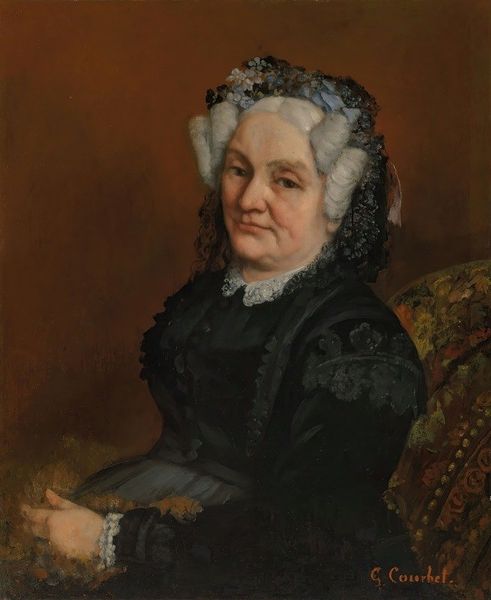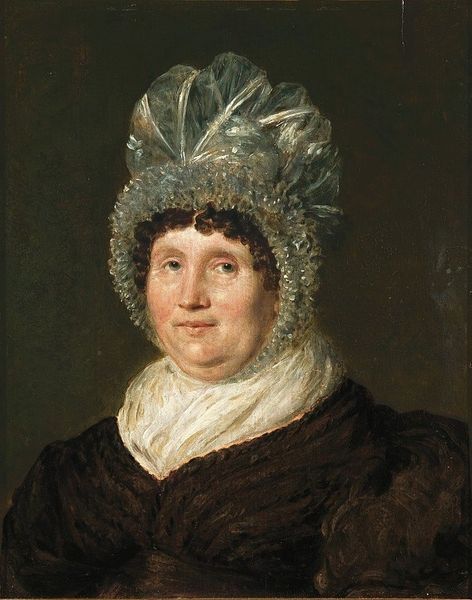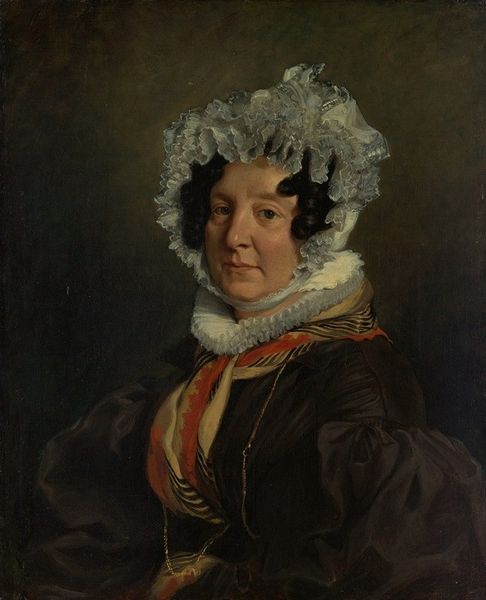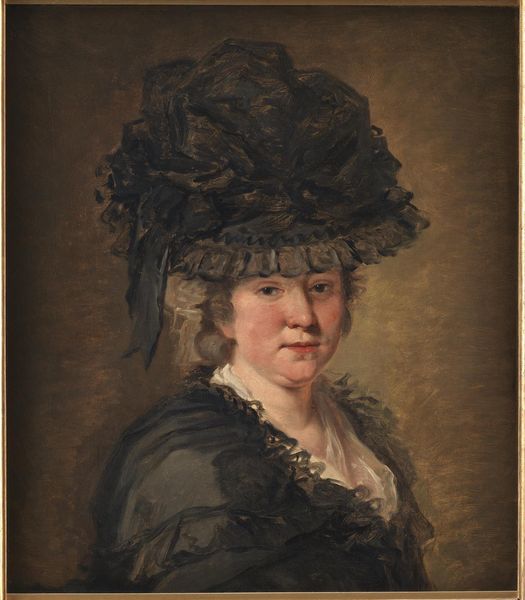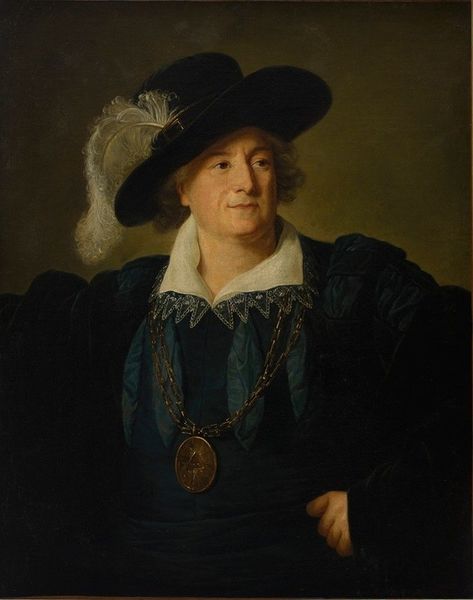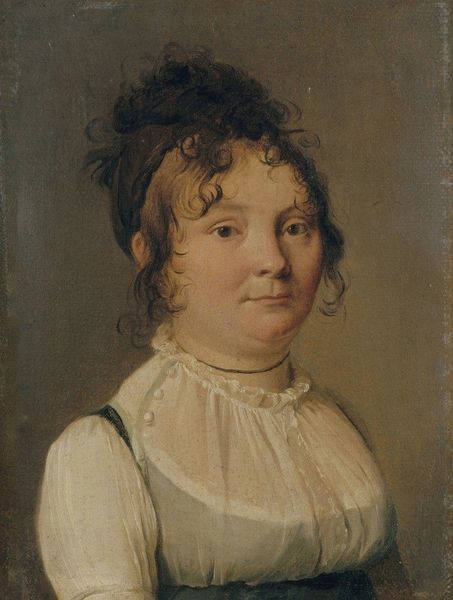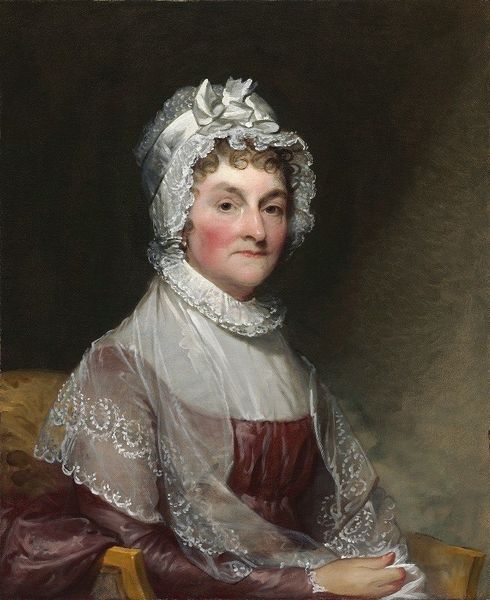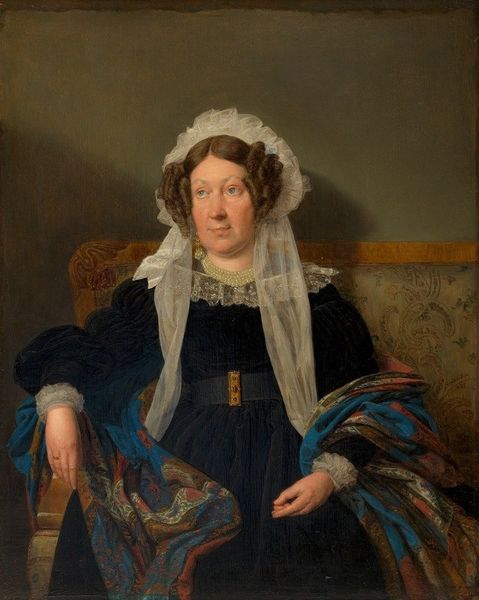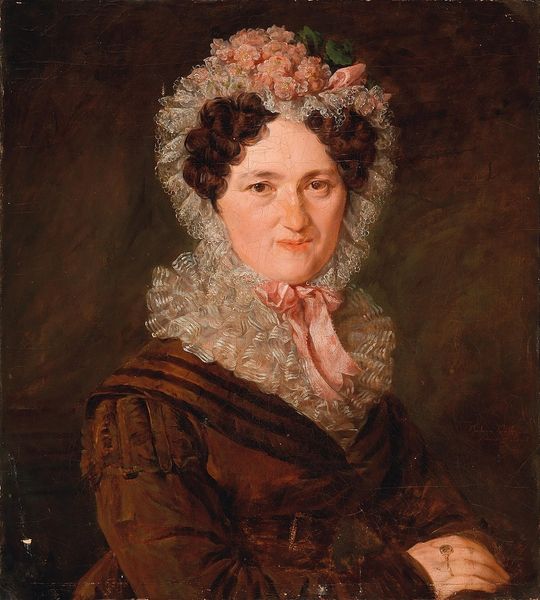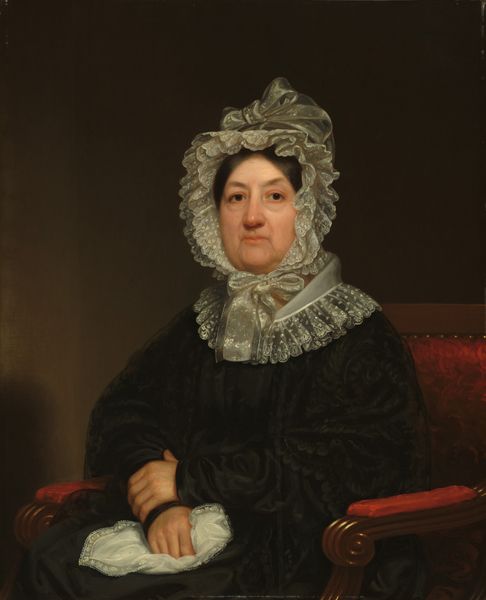
oil-paint
#
portrait
#
figurative
#
oil-paint
#
oil painting
#
portrait reference
#
portrait head and shoulder
#
romanticism
#
animal drawing portrait
#
portrait drawing
#
facial portrait
#
portrait art
#
fine art portrait
#
celebrity portrait
#
digital portrait
Copyright: Public Domain: Artvee
Curator: The way the light falls in this oil portrait creates an undeniably intimate, although perhaps slightly formal, atmosphere. Editor: Absolutely. There is a grounded, almost stoic sensibility about it. Could you share some more details about the work? Curator: Certainly. The piece is entitled "Josephine Schaumburg, geb. Stahel," by Ferdinand Georg Waldmüller, painted in 1834. Waldmüller was known for his commitment to representing people as they were, moving away from idealization. Editor: That comes across strongly. Looking at her attire, it is hard to discern any obvious symbolism. It speaks more to social status perhaps. Curator: Precisely. The fabric, the lace, the careful arrangement of her hair; all elements emphasize her position in society, likely upper-middle class or higher. What resonates is a sense of quiet dignity. One wonders about the societal pressures and expectations placed on women during that time, particularly those of her social standing. Editor: It brings into focus the limited agency women often possessed in that era. Portraiture like this could be interpreted as both a celebration and a subtle confinement. It shows how representation of women in art were shaped by very gendered constraints. Curator: I agree completely. Think too about the artist’s agency, the patrons commissioning portraits like this. What were they aiming to communicate? How does Waldmüller both fulfill and subtly challenge those expectations? The slightly downturned mouth, is it weariness, perhaps boredom? These nuances suggest he was interested in going beyond the surface. Editor: Ultimately it provokes considerations about women's positions in 19th-century society. We could extend these issues of status, expectation and, agency beyond gender to any individual represented by wealth. Curator: Indeed, it’s a reminder of the complex interplay between art, power, and representation and how that interplay influences the viewer. Editor: Yes, it's definitely been insightful examining it with that awareness in mind.
Comments
No comments
Be the first to comment and join the conversation on the ultimate creative platform.
